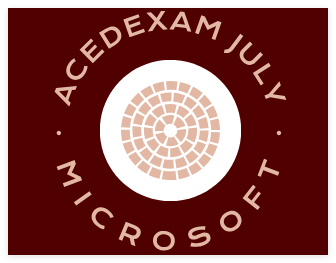Categories
Archives
- July 2024
- June 2024
- May 2024
- March 2024
- January 2024
- December 2023
- October 2023
- September 2023
- August 2023
- July 2023
- May 2023
- April 2023
- January 2023
- December 2022
- October 2022
- September 2022
- July 2022
- June 2022
- April 2022
- March 2022
- December 2021
- November 2021
- September 2021
- July 2021
- May 2021
- March 2021
- January 2021
Category: Microsoft DP-900 Exam
Views – Relational Databases in Azure
Views Views are virtual tables whose contents are defined by a query. The rows and columns of data in a view come from tables referenced in the query that define the view. They act as a virtual layer to filter and combine data from regularly queried tables. Users can simplify their queries since views handle …
Indexes – Relational Databases in Azure
Indexes Consider the index at the end of this book. Its purpose is to sort keywords and provide each keyword’s location in the book. Database indexes work very similarly in that they sort a list of values and provide pointers to the physical locations of those values. Ideally, indexes are designed to optimize the way …
Extract – Core Data Concepts
Extract The first phase of an ETL process involves extracting data from different source systems and storing it in a consolidated staging layer that is easier for the transformation tools to access. Data sources are typically heterogenous and are represented by a wide variety of data formats. The staging layer can be transient to cut …
Stored Procedures – Relational Databases in Azure
Stored Procedures Stored procedures are groups of one or more T-SQL statements that perform actions on data in a database. They can be executed manually or via an external application (e.g., custom .NET application, Azure Data Factory). They can also be scheduled to run at predetermined periods of time with a SQL Server Agent job, …
Relational Database Offerings in Azure – Relational Databases in Azure
Relational Database Offerings in Azure Until recently, most organizations hosted their database systems in on-premises datacenters that they owned or leased. They were responsible for applying updates to the database software and had to make sure that the hardware hosting the databases was properly maintained. Business continuity aspects such as database backup management, high availability …
Relational Database Offerings in Azure – Relational Databases in AzureRead More
Azure SQL – Relational Databases in Azure
Azure SQL Azure SQL is a broad term used to describe the family of SMP relational database products in Azure that are built upon Microsoft’s SQL Server engine. These include one IaaS option with SQL Server on Azure Virtual Machines (VM) and two PaaS options with Azure SQL MI and Azure SQL Database. Azure SQL …
SQL Server on Azure Virtual Machine – Relational Databases in Azure
SQL Server on Azure Virtual Machine There are several reasons why an organization would want to migrate its applications to the cloud. Perhaps the most common reason is to offload the maintenance of hardware and networking equipment that it either owns or leases to a cloud provider. Expiring datacenter leases or aging hardware force many …
SQL Server on Azure Virtual Machine – Relational Databases in AzureRead More
Business Continuity – Relational Databases in Azure
Business Continuity There are multiple solutions available in Azure to ensure that data hosted on SQL Server VMs is highly available in the event of several outage scenarios, ranging from planned downtime to datacenter-level disasters. These include solutions that provide database backup management at the database level and high availability and disaster recovery (HADR) capabilities …
Business Continuity – Relational Databases in AzureRead More

